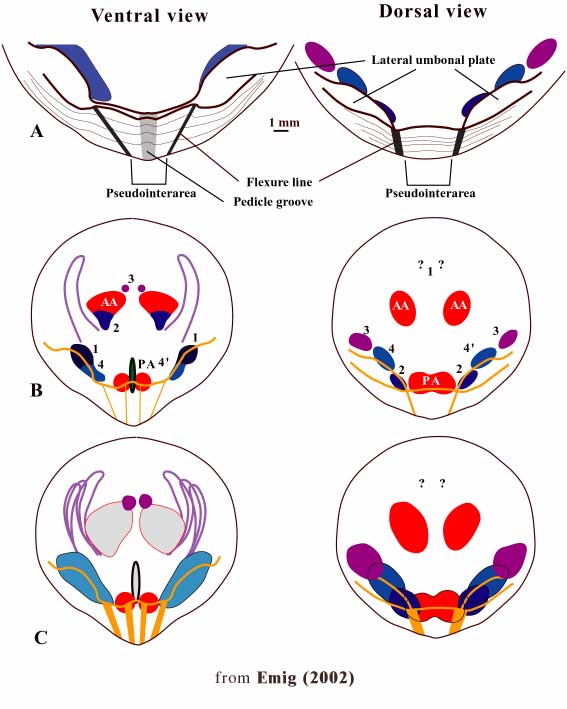 |
|
|||
Previous diagnosis in the Treatise (2000):
Shell circular to rounded triangular, dorsibiconvex to subequally biconvex; ventral propareas with deep, narrow pedicle groove; dorsal pseudointerarea lacking flexure lines; visceral area of both valves weakly thickened, extending to midvalve; dorsal median ridge vestigial or absent; vascula lateralia of both valves submarginal, arcuate.
|
[O. apollinis; SD Davidson, 1853, p. 135; =Obulus Quenstedt,1868, p. 732] New diagnosis (in Emig, 2002 - see reference below) Bi-symmetrical muscle arrangement (*)
Ventral valve:
Dorsal valve:
Middle Cambrian-Ordovician (Tremadoc)
(*) Nota : The Posterior Internal Oblique muscle (numbered 4": Emig 1982) is at present only known in Lingula, Glottidia and Lingularia, which have an asymmetrical muscle arrangement. This feature is probably for the family diagnosis (see above)
|
|
| |
| Species of Obolus |

